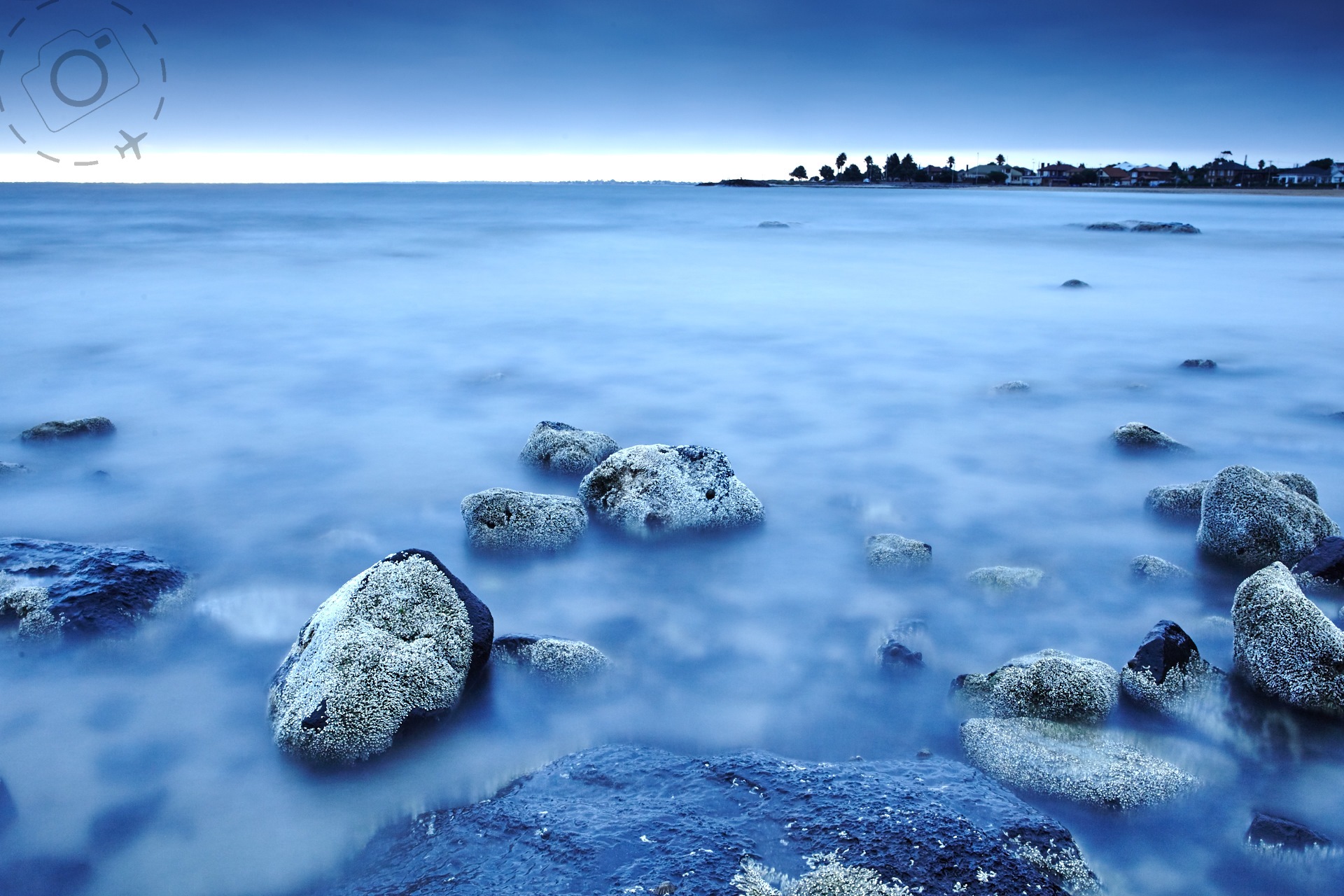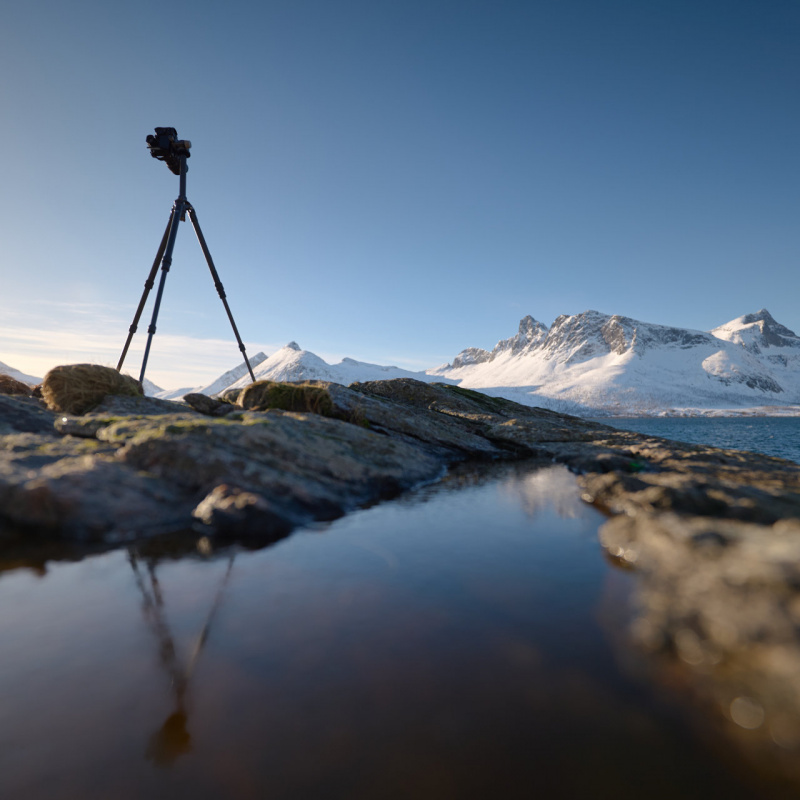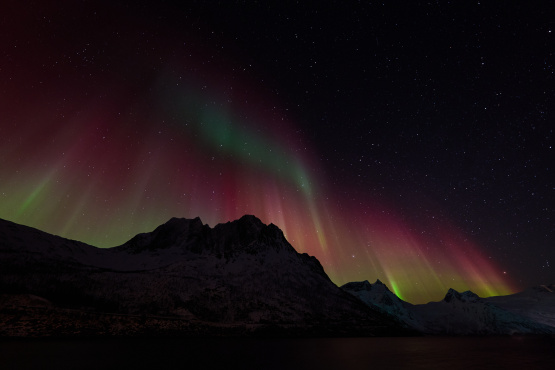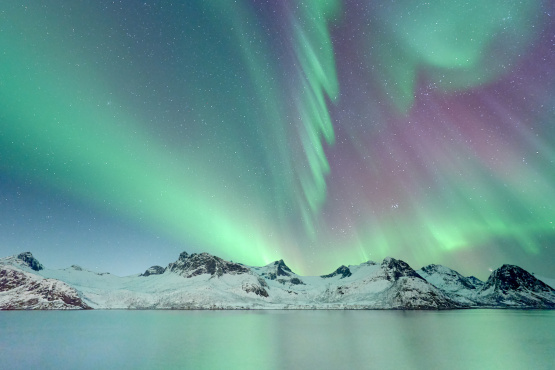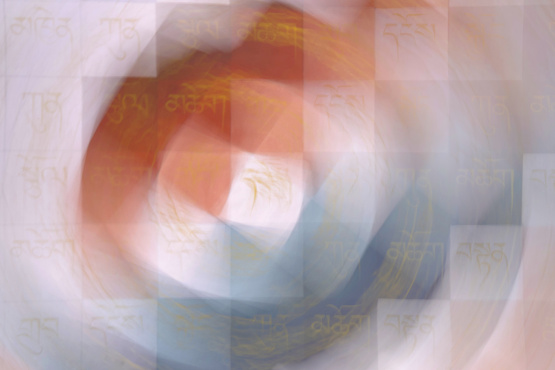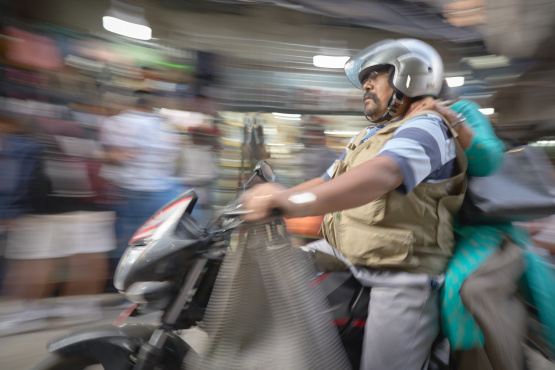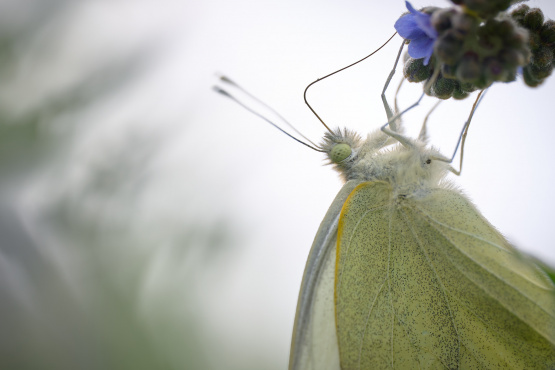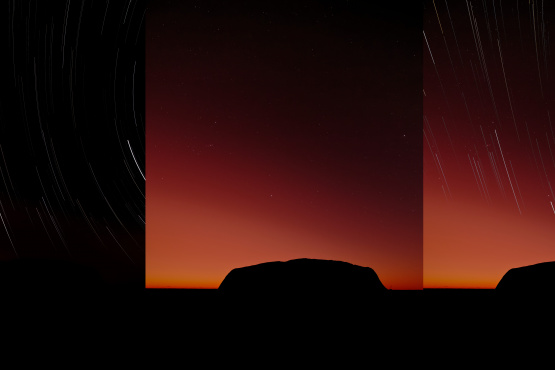Sometimes the best sunset doesn't have any sun at all. We had planned to shoot some scenes of the summer sunset after work one day, but the clouds came in and filled the horizon with dark bands. Even better - if you like shooting seascapes with a very slow shutter. The sun was due to set around 9pm and we arrived at the beach around 8pm.
We drove along a few stretches to see if there were some interesting rocks exposed by the tide, something to add foreground interest. Over time you get familiar with a location and will know whether low tide or high tide will give you the best formation of rocks. Usually it's somewhere in between, and a quick check of the tide charts can help assess which day of the month to plan a trip.
Having picked out a bunch of small rocks near a breakwater we set about setting up. The key to this shot is getting your feet wet, and that means your sandles are going in the water along with the tripod. The Gitzo GT2541 has no metal parts below the head mount so I didn't have to worry about the salt and waves wrecking a brand new bit of kit. It's very light to pack yet really solid in use.
My favourite compositions were with the lens low down on the rocks. Shooting with a wide angle lens lets you give a large amount of prominence to small elements in the foreground, but you have to get close. This is where the near horizontal stance of a tripod is useful. I had two legs folded up short with enough clearance from the waves to keep my camera dry, but the third leg is fully extended and poked out sideways. This makes the platform incredibly stable and far more resilient to the wash of waves.
We need a very stable platform for 30 second exposures. Anything less than rock solid is a waste of time, which is why you should never go cheap on buying a tripod.
We're shooting everything with the camera locked down. I've locked off the autofocus and selected a manual exposure setting of 30 seconds at f/13. As you start to head north of this figure the physical size of your aperture is so fine that diffraction causes distortion of the image. I'm shooting with a prime 24mm lens, good enough to visibly detect the diffraction limits of the lens. If you cant see the difference in diffraction between shooting at low or high f-stops then it means your lens has other flaws that are causing yet worse aberrations.
Shooting such long exposures I'm not bothered about a cable release or even the self-timer. Any minor shudders from my clumsy fingers on the trigger will be insignificant against a 30 second exposure. I take a series of test shots to assess whether my focus is landing in the right spot. In essence I'm working with a hyperfocal distance, about 2/3rds back from the far horizon. But this is a subjective assessment as 'in focus' is a relative ideal. Some bits are more in focus than others, and by limiting myself to f/13 for the sake of image quality I have a limited amount of 'depth-of-field' to play with as well.
I'm using the noise reduction feature of my Canon 1D, a specific setting designed for long exposures that detects any aberrant behaviour of pixels. I want the best image for my capture as possible, trying not to rely on post-processing for everything. There is a limit to what you can hope to achieve on the desktop and in essence I'm a camera jockey, not a Photoshop jockey. The downside to noise reduction modes is they double the time to capture on image. The first 30 seconds is taking in the shot, and the second 30 seconds is the camera repeating the exposure in the dark to test for pixel problems.
Because I'm looking for a Black & White image at the end of my evenings work I've set the preview mode on the camera to monochrome as well. It gets me into the spirit of things and gives me a good idea of what my final shot will look like. There's not a huge difference between the cameras rendition and my tweaking on the desktop in Capture One.
After an hour of standing shin deep in water the light continues to drop and we reach a point where the ND400 filter is now too slow for my 30second exposures. At this twilight moment the exposures are still too bright without the ND filter, and we have to wait for a bit more darkness. It becomes apparent though that stumbling over pointy rocks covered in seaweed might be a little dangerous in the dark. Even more so when you're schlepping a tripod rig and your camera bag. One slip could be very expensive. The Gitzo might stand up to a dunk in the salt water but a full frame DSLR probably wont.
This put into perspective just how useful that little ND400 filter really is. I bought it with waterfalls and racing clouds in mind, but in fact a trip to the beach on a cloudy dusk is also ideal.
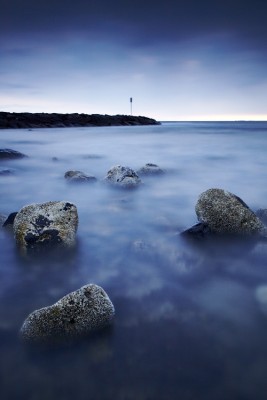

Keep Reading
Join Ewen's newsletter for monthly updates on new photography articles and tour offers...Subscribe Here

